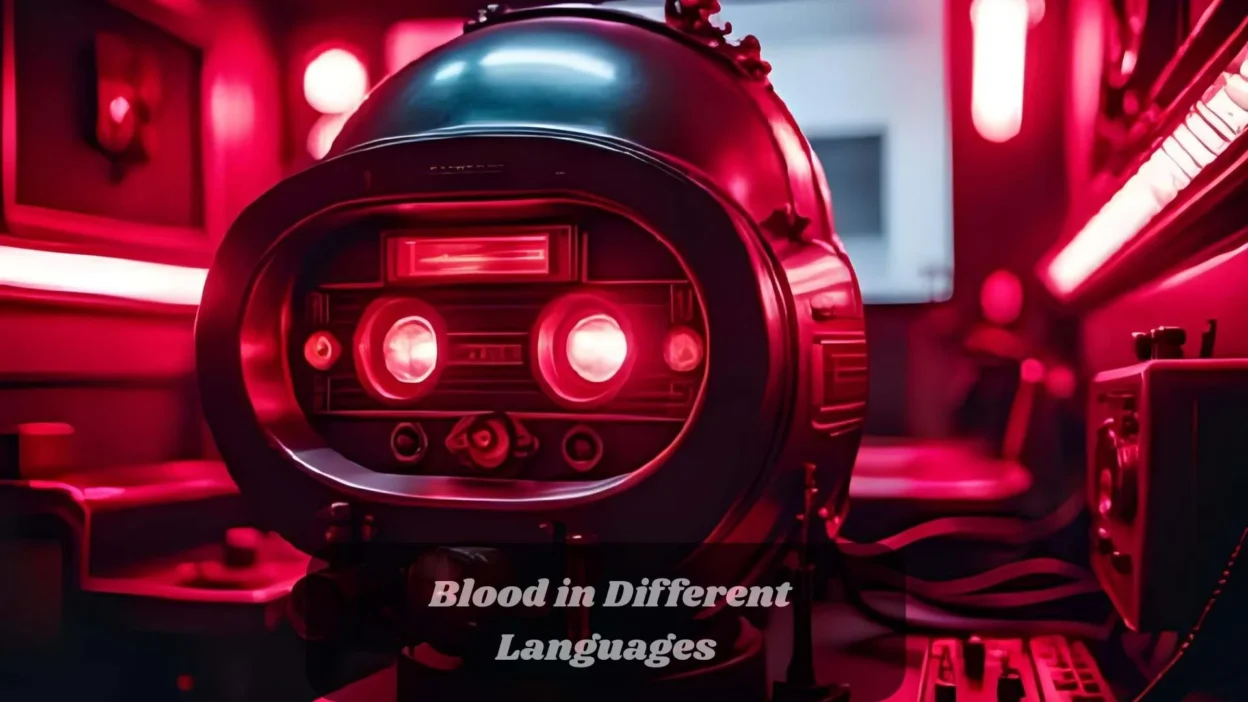Blood is a powerful symbol across cultures—representing life, lineage, sacrifice, and strength.
It’s a word used in medicine, poetry, and even mythology. In this article, we explore how to say “blood” in 70 different languages, including pronunciation and example sentences to enhance your understanding.
Translations of “Blood” in Different Languages
- English – Blood (bluhd)
The doctor said he lost a lot of blood. - Spanish – Sangre (SAHN-greh)
La sangre es roja. - French – Sang (sɑ̃)
Il y a du sang sur sa chemise. - German – Blut (bloot)
Er verlor viel Blut. - Italian – Sangue (SAHN-gweh)
Il sangue scorre nelle vene. - Portuguese – Sangue (SAHN-gee)
O sangue é vital para o corpo. - Russian – Кровь (krov’)
Он потерял много крови. - Ukrainian – Кров (krov)
У нього була кров на обличчі. - Polish – Krew (kref)
Jego krew była na podłodze. - Czech – Krev (kref)
Potřebuje krevní transfuzi. - Dutch – Bloed (bloot)
- Swedish – Blod (blohd)
- Norwegian – Blod (blohd)
- Danish – Blod (blohl)
- Finnish – Veri (VEH-ri)
- Estonian – Veri (VEH-ri)
- Latvian – Asinis (AH-see-nees)
- Lithuanian – Kraujas (KRAU-yahs)
- Hungarian – Vér (vayr)
- Romanian – Sânge (SÛN-jeh)
- Greek – Αίμα (É-ma)
- Turkish – Kan (kahn)
- Arabic – دم (dam)
- Hebrew – דם (dam)
- Persian (Farsi) – خون (khun)
- Hindi – खून (khoon)
- Bengali – রক্ত (rokto)
- Urdu – خون (khoon)
- Punjabi – ਖੂਨ (khoon)
- Gujarati – લોહી (lohi)
- Marathi – रक्त (rakt)
- Tamil – இரத்தம் (irattam)
- Telugu – రక్తం (raktam)
- Kannada – ರಕ್ತ (rakta)
- Malayalam – രക്തം (raktham)
- Sinhala – රුධිරය (rudhiraya)
- Thai – เลือด (lʉ̂at)
- Lao – ເລືອດ (lʉ̄a)
- Vietnamese – Máu (mao)
- Khmer – ឈាម (chhiem)
- Chinese (Mandarin) – 血 (xuè)
- Japanese – 血 (chi)
- Korean – 피 (pi)
- Mongolian – Цус (tsus)
- Tibetan – ཁྲག (khrag)
- Malay – Darah (DAH-rah)
- Indonesian – Darah (DAH-rah)
- Tagalog – Dugo (doo-GOH)
- Javanese – Getih (guh-TEE)
- Sundanese – Getih (guh-TEE)
- Swahili – Damu (DAH-moo)
- Zulu – Igazi (ee-GAH-zee)
- Xhosa – Igazi (ee-GAH-zee)
- Yoruba – Ẹ̀jẹ̀ (eh-jeh)
- Igbo – Ọbara (oh-BAH-rah)
- Hausa – Jini (jee-nee)
- Amharic – ደም (dem)
- Somali – Dhiig (theeg)
- Tigrinya – ደም (dem)
- Afrikaans – Bloed (bloot)
- Esperanto – Sango (SAHN-go)
- Latin – Sanguis (SAN-gwis)
- Welsh – Gwaed (gwaid)
- Irish – Fuil (fwil)
- Scottish Gaelic – Fuil (fwil)
- Basque – Odol (OH-dol)
- Catalan – Sang (sank)
- Galician – Sangue (SANG-eh)
- Hawaiian – Koko (koh-koh)
- Maori – Toto (toh-toh)
🩸 Final Thought
No matter where you’re from or what language you speak, the word for blood connects us through shared humanity and symbolism. It’s the life force flowing through us all, and knowing how to express it in different tongues deepens our appreciation of cultural diversity and language richness.
“Blood speaks in many languages—but its meaning is universally powerful.”




